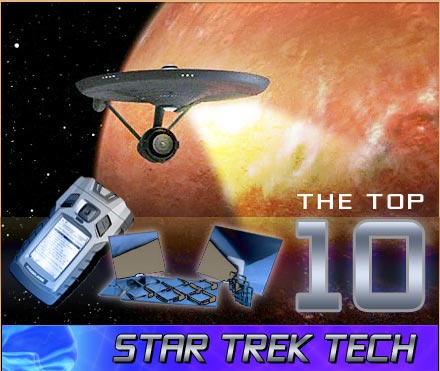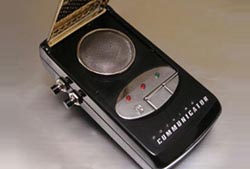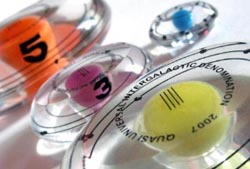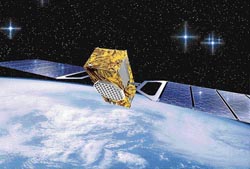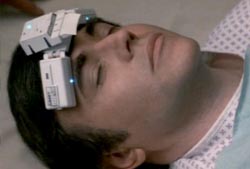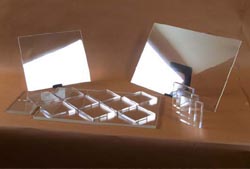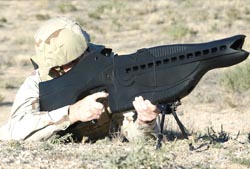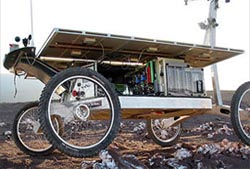The Top 10 Star Trek Technologies
The Top 10 Star Trek Technologies
Classic Star Trek contributed more to the modern world than phrases like "Beam me up, Scotty!" Many of the devices we saw decades ago are now available for use in the real world; we thank the engineers who made real these ten Star Trek technologies. - Bill Christensen, Technovelgy.com
Behold, the Cell Phone
Star Trek popularized the idea of a communicator that could instantly connect two crew members on different parts of a planet. To answer the device, you just flipped it open and started talking. Of course, everyone recognizes this device today as a cell phone. Amateur electronics wizards have occasionally made replica Star Trek communicators available on eBay; they use Bluetooth technology to piggyback on your cell phone service.
Handy Medical Tools
When Enterprise crew members became sick, Dr. McCoy was able to diagnose the problem in record time, usually thanks to his medical tricorder. Today's physicians make use of Magnetic Resonance Imaging (MRI) and CAT scans in much the same way. For smaller bugs, NASA has actually tested a similar kind of device on the space station. The LOCAD-PTS is able to detect and identify within minutes environmental pathogens (fungi or bacteria) that could adversely affect the health of crew members.
Say What? Translators from Google and Co.
The Enterprise constantly dealt with intelligent beings throughout the galaxy. When different languages were encountered, the Universal Translator was there to help bring different cultures together. In the real world, the US military is using the Phraselator in Iraq for speech translation and Internet juggernaut Google, among others, can translate Web sites to suit user needs. Also, just this month, NEC announced the first cell phone with speech translation.
QUIDs
When the crew of the Enterprise received a well-deserved shore leave, they needed some kind of money to buy goods and services. The science fiction standby of "credits" was usually brought into the picture. Today, however, real-life astronauts can use colorful QUID's (Quasi Universal Intergalactic Denomination), which are specially designed for use in space.
Global Positioning System Devices
The Enterprise's transporter was able to zero in on the exact location of an individual crew member from thousands of miles away. Although we're still working on teleportation (see USAF Looks Into Teleportation), we've pretty much got the location technology down pat. It's called the Global Positioning System - GPS. One such satellite, one of Europe's planned Galileo network, is shown above.
Mars Rover Sensors
Whenever Spock beamed down to a planetary surface, there was one thing he always took with him - his trusty tricorder. This handy pocket-sized device could do things like analyze the minerals in soil and look for life signs. NASA is ready to send similar sensors to Mars in coming years, like the Raman spectrometer shown above.
Breaking space news, the latest updates on rocket launches, skywatching events and more!
Focused Ultrasound Surgery
This surgical technique is a non-invasive way to destroy unwanted masses within the body (like uterine fibroids) without harming the surrounding tissues. I seem to recall Dr. McCoy touting the advantages of doing surgery without using knives decades ago. On one occasion, he saved Chekov with a nifty little non-invasive surgery device (see photo), saying "Put away your butcher knives and let me save this patient before it's too late!"
Transparent Aluminum Armor
Transparent aluminum armor (aluminum oxynitride - ALON) is being tested by the military as a lighter and stronger alternative to traditional materials. ALON is a ceramic compound with very high compressive strength and durability; it offers better performance than traditional materials consisting of bonded glass. in extensive testing, ALON has performed well against multiple hits of armor-piercing rounds. Trek fans fondly recall how the formula for (science-fictional) transparent aluminum came to our time; Scotty blabbed it to an engineer (see photo).
Military PHASR
Several prototype PHASR weapons are being tested by the US military. The Personnel Halting and Stimulation Response device is under development at the Air Force Research Laboratory's Directed Energy Directorate. The PHASR has been designed as a non-lethal, man-portable deterrent weapon. It uses a laser system with two different wavelengths to blind (temporarily!) the enemy. The clever acronym for this device is obviously back-formed to resemble its original - the phaser rifle from Star Trek, which actually looks very similar (see another photo).
Life Detectors
A robotic rover called Zoe is the first robot to remotely detect the presence of life. On a NASA-sponsored mission in the harsh Atacama desert in Chile, Zoe was able to detect life by looking for natural fluorescence from lichens and bacteria. Life detection is all the rage now; the European Space Agency will be using the Urey Life Detector on an upcoming Mars mission (see photo). These devices mimic the function of the long range sensors from Star Trek, which could detect life from unreasonably long distances.

Space.com is the premier source of space exploration, innovation and astronomy news, chronicling (and celebrating) humanity's ongoing expansion across the final frontier. Originally founded in 1999, Space.com is, and always has been, the passion of writers and editors who are space fans and also trained journalists. Our current news team consists of Editor-in-Chief Tariq Malik; Editor Hanneke Weitering, Senior Space Writer Mike Wall; Senior Writer Meghan Bartels; Senior Writer Chelsea Gohd, Senior Writer Tereza Pultarova and Staff Writer Alexander Cox, focusing on e-commerce. Senior Producer Steve Spaleta oversees our space videos, with Diana Whitcroft as our Social Media Editor.
